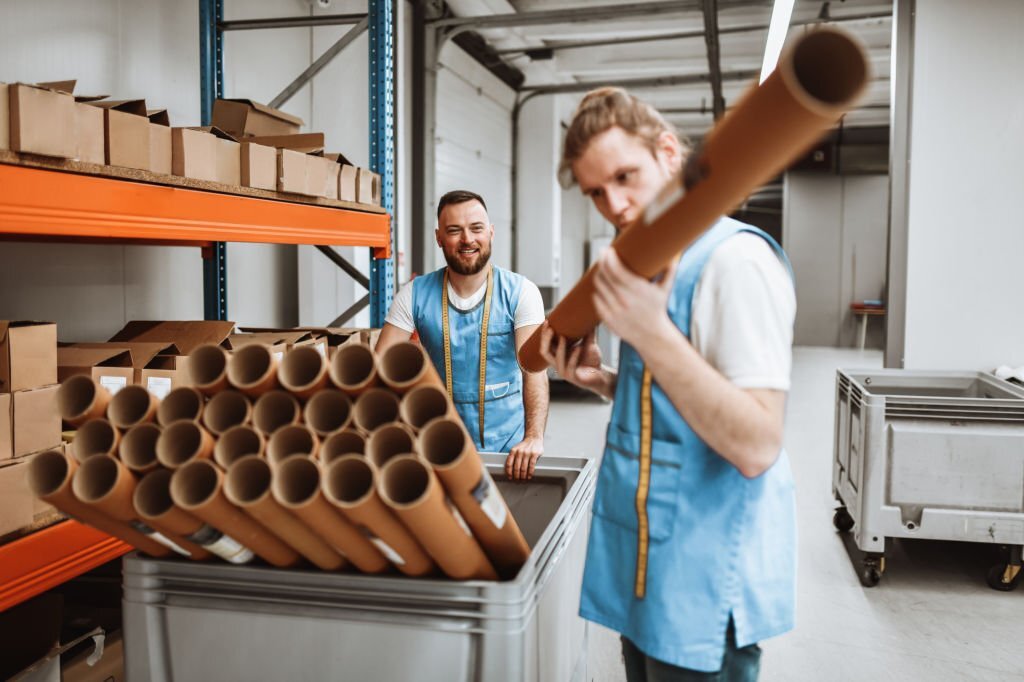Let’s find out an in-depth idea about what are the benefits of Climate-Controlled Storage.
Artwork, be it paintings, sculptures, or delicate mixed media pieces, is susceptible to various environmental factors that can cause irreversible damage. These factors include temperature fluctuations, humidity levels, light exposure, mold, pests, and physical accidents. To combat these risks, a climate-controlled environment provides the necessary conditions to ensure the longevity and preservation of your artwork.
Protection against Temperature Fluctuations

Temperature fluctuations can have a significant impact on the artwork, especially those created with delicate materials or sensitive pigments. Extreme heat or cold can cause paint to crack, adhesives to weaken, and organic materials to degrade. By storing your artwork in a climate-controlled environment, you can mitigate these risks. Climate control systems maintain a stable temperature range, usually between 68°F and 72°F (20°C and 22°C), minimizing the negative effects of temperature fluctuations.
Prevention of Humidity-Related Issues
High humidity levels can be equally damaging to artwork as extreme temperatures. Excessive moisture in the air can lead to mold growth, paper warping, paint discoloration, and the deterioration of organic materials. Climate-controlled storage facilities regulate humidity levels, usually maintaining them between 40% and 50%, to prevent these issues. The controlled humidity helps preserve the integrity and stability of the artwork.
Preservation of Color and Material Integrity
Artwork, particularly paintings, can be highly sensitive to light exposure. Over time, prolonged exposure to ultraviolet (UV) radiation can cause pigments to fade or change color. Climate-controlled storage facilities employ UV filtering systems and low-light environments to protect artwork from harmful light rays. By minimizing exposure, these facilities help preserve the original color and material integrity of the artwork.
Prevention of Mold and Pest Infestation

Mold and pests pose significant risks to artwork, as they can cause irreversible damage and compromise its structural stability. Mold thrives in damp environments, and pests such as insects and rodents are attracted to organic materials. Climate-controlled storage facilities are designed to inhibit mold growth by maintaining optimal humidity levels and implementing regular inspections. Additionally, these facilities often have pest control measures in place to protect artwork from infestations.
Reducing the Risk of Physical Damage
Fluctuations in humidity and temperature can cause physical damage to artwork. Wood can expand and contract, the canvas can warp, and delicate materials can become brittle or fragile. By providing a climate-controlled environment with stable conditions, the risk of physical damage is significantly reduced. This ensures that your artwork remains structurally sound, minimizing the chances of accidents or deterioration.
Enhancing Longevity and Value
Storing your artwork in a climate-controlled environment offers long-term preservation benefits. By mitigating environmental risks, such as temperature, humidity, light exposure, and pests, you can extend the lifespan of your artwork. Preserving the quality and condition of your pieces also enhances their value. Should you decide to sell or exhibit your artwork in the future, well-preserved pieces tend to command higher prices and garner more attention from collectors.
Safety and Security Measures
Climate-controlled storage facilities not only provide the ideal environmental conditions but also offer additional safety and security measures. These facilities are equipped with fire suppression systems to protect artwork from potential fire hazards. Surveillance cameras, access control systems, and on-site security personnel ensure the safety and integrity of stored artwork. With these safeguards in place, you can have peace of mind knowing that your artwork is well-protected.
Professional Handling and Conservation Services

Climate-controlled storage facilities often have specialized staff with expertise in handling and preserving artwork. They understand the intricacies of different art mediums and can provide valuable advice on proper storage techniques. Additionally, these facilities may offer conservation and restoration services, helping you maintain and restore your artwork to its original condition if needed.
Cost Considerations and Affordability
While climate-controlled storage offers numerous benefits, it is essential to consider the associated costs. Factors such as storage space, facility location, and additional services can influence the overall cost. However, when compared to the potential loss or damage that artwork can incur in unsuitable storage conditions, investing in climate-controlled storage is often a wise decision. Many facilities offer flexible pricing options, ensuring that you can find a solution that aligns with your budget.
Conclusion
Storing your artwork in a climate-controlled environment is a proactive measure to protect and preserve its beauty, integrity, and value. By safeguarding your pieces against temperature fluctuations, humidity-related issues, light exposure, mold, pests, and physical damage, climate-controlled storage facilities provide optimal conditions for long-term preservation. The benefits extend beyond protection, enhancing the longevity of your artwork and its potential appreciation in value. So, whether you are a professional artist, a collector, or an art lover, opting for climate-controlled storage is a prudent choice.
FAQ Section
Q: What is the ideal temperature for storing artwork?
A: The ideal temperature for storing artwork is generally between 68°F and 72°F (20°C and 22°C). This temperature range helps minimize the risk of damage caused by extreme heat or cold.
Q: Can any artwork be stored in a climate-controlled environment?
A: Yes, climate-controlled storage is suitable for various types of artwork, including paintings, sculptures, photographs, prints, and delicate mixed media pieces. It provides the necessary conditions to preserve their quality and longevity.
Q: Are there any disadvantages to climate-controlled storage?
A: While climate-controlled storage offers numerous benefits, one potential disadvantage is the associated cost. However, considering the long-term preservation and protection it provides, the investment is often worthwhile for valuable artwork.
Q: How does climate control affect the energy consumption of the storage facility?
A: Climate control systems do require energy to maintain the desired temperature and humidity levels. However, modern facilities employ energy-efficient technologies to minimize consumption and reduce environmental impact.
Q: Is climate-controlled storage necessary for all types of artwork?
A: While climate-controlled storage is highly recommended for valuable and sensitive artwork, less delicate pieces may fare well in standard storage conditions. It’s essential to assess the specific requirements of your artwork and consult with professionals if you are unsure.



